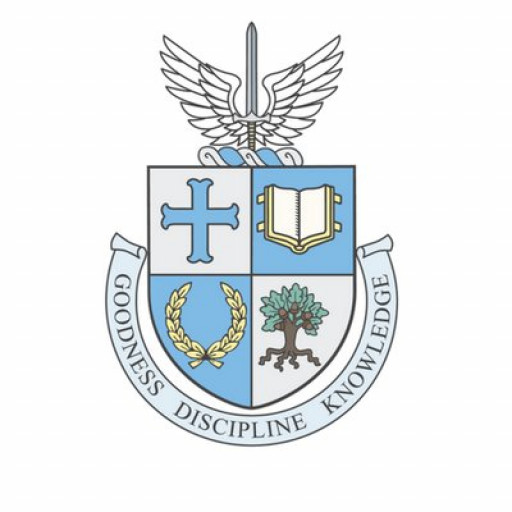Photos of university / #sheridan_college
The Art and Art History program at Sheridan College offers students an immersive educational experience that combines practical artistic skills with a comprehensive understanding of art history and visual culture. This innovative program is designed to cultivate both creative expression and critical thinking, preparing graduates for diverse careers within the arts sector. Students will engage in studio-based learning, exploring various mediums such as drawing, painting, sculpture, and digital media, while also delving into the historical, cultural, and theoretical contexts that underpin artistic practices worldwide.
Throughout the program, students are encouraged to develop a unique artistic voice while gaining technical proficiency in their chosen disciplines. The curriculum emphasizes hands-on experience, critical analysis, and reflective practice, enabling students to produce compelling artwork that demonstrates technical mastery and conceptual depth. In addition to studio work, coursework includes modules in art history, visual culture, contemporary art practices, and curatorial studies, providing a well-rounded foundation that bridges creative production with academic inquiry.
The program fosters an interdisciplinary approach, encouraging students to explore the intersections of art with society, politics, technology, and identity. Opportunities for internships, exhibitions, and collaborative projects allow students to build professional networks and gain real-world experience, positioning them well for careers as artists, curators, art critics, educators, and other roles within the arts community. Sheridan’s faculty comprises experienced artists and scholars dedicated to mentoring students and supporting their artistic growth.
Graduates of the Art and Art History program will possess a versatile skill set, enabling them to contribute innovatively to the contemporary art world or pursue further academic studies in related fields. The program’s emphasis on critical engagement, technical skill, and cultural literacy prepares students to become thoughtful creators and informed viewers of art in all its forms. Whether aiming to showcase their work publicly, engage with art institutions, or explore academic pathways, students will find a dynamic environment that nurtures their artistic ambitions and intellectual curiosity.
The Art and Art History program at Sheridan College offers students a comprehensive and immersive exploration into the creative world of visual arts and the academic study of art across various periods and cultures. This program is designed to develop students' technical skills, critical thinking, and contextual understanding of art, enabling them to engage meaningfully with both contemporary and historical art practices. Throughout the program, students will engage in diverse coursework that combines studio art, art history, and professional practices, providing a well-rounded foundation for careers in art, education, curation, or further academic pursuits.
In studio courses, students explore a variety of mediums such as drawing, painting, sculpture, and digital media, encouraging experimentation and personal expression. These hands-on classes emphasize technical proficiency, composition, and conceptual development. Concurrently, art history courses offer in-depth study of art movements, influential artists, cultural contexts, and the evolution of visual culture from antiquity to the modern era. This dual focus ensures students develop a critical eye and a deep understanding of the significance of visual arts within societal frameworks.
The program fosters the development of professional skills through opportunities in exhibition design, art critique, and art management, preparing students for careers in galleries, museums, and arts administration. Students also learn essential skills in visual communication, digital tools, and contemporary art practices, equipping them to adapt to changing industry demands. Collaborative projects and community engagement initiatives are integral components, encouraging teamwork and social awareness.
Graduates of the Art and Art History program will possess a versatile skill set that balances creative talent with historical and cultural literacy. They will be prepared to pursue further education, work as professional artists, art educators, or cultural workers, or continue their development in specialized art fields. The program emphasizes an interdisciplinary approach, fostering innovative thinking and a lifelong appreciation for the arts. Through this program, students will cultivate both artistic ability and critical understanding, empowering them to contribute meaningfully to the vibrant world of visual arts.
The Bachelor of Arts in Art and Art History at Sheridan College requires students to complete a comprehensive curriculum designed to build foundational knowledge and advanced skills in visual arts and history. The program emphasizes both practical studio experience and theoretical understanding of art movements, history, and contemporary practices. Students are expected to engage in diverse coursework including drawing, painting, sculpture, digital media, and mixed media methodologies, enabling them to develop their artistic skills and personal style. Additionally, the program includes rigorous art history courses that provide contextual background, critical analysis, and appreciation of art across different periods and cultures.
To graduate, students must complete a specified number of credits, including core courses, electives, and capstone projects. The core curriculum typically encompasses foundational studio courses, such as Drawing I and II, Two-Dimensional and Three-Dimensional Design, and Introduction to Contemporary Art, which aim to cultivate technical proficiency and conceptual thinking. Advanced courses might include Sculpture Techniques, Digital Media Art, and Painting Methods, encouraging experimentation and innovation.
In parallel, students are required to take art history courses covering topics such as Western Art from Ancient to Modern periods, Non-Western Art, and Critical Theory, fostering a comprehensive understanding of art’s historical and cultural significance. The program also promotes experiential learning through internships, exhibitions, and collaborative projects, preparing students for careers as professional artists, curators, arts administrators, or educators.
Furthermore, students must participate in portfolio reviews and critiques to develop their ability to present and defend their work professionally. The program also encourages interdisciplinary approaches, integrating technology and contemporary practices into traditional art forms. A critical component is the final capstone project, where students showcase a substantial body of work accompanied by written documentation, demonstrating their artistic development and conceptual depth.
Assessment throughout the program includes a combination of practical assignments, written papers, presentations, and public exhibitions, ensuring students demonstrate both technical skill and critical insight. Overall, the program fosters the development of well-rounded artists and scholars equipped with the skills, knowledge, and creative confidence to succeed in the dynamic field of art.
Financing options for the Art and Art History program at Sheridan College include a variety of financial aid and funding opportunities available to both domestic and international students. Students can apply for government student loans, such as federal and provincial assistance programs, which provide need-based financial support to help cover tuition fees and living expenses. Scholarship opportunities are also available through Sheridan College, including entrance scholarships for outstanding academic achievement and bursaries intended to assist students facing financial difficulties. Additionally, numerous external organizations and foundations offer scholarships and grants specifically for students pursuing studies in the arts, which can be accessed via application processes outlined by Sheridan College.
Students are encouraged to explore private funding options, including bank loans and sponsorships from private entities, which may offer favorable terms for students enrolled in accredited arts programs. The college provides guidance and resources to assist students in identifying suitable financing options and completing necessary applications, including workshops and counseling services. Part-time employment opportunities on campus and within the surrounding community also provide students with additional income to support their studies, and Sheridan College's Career Centre offers assistance in finding suitable positions.
International students enrolled in the Art and Art History program can access specific scholarship programs designed for international students, along with opportunities for work placements and internships that contribute to practical experience and financial support. The college maintains a dedicated International Centre that offers advice on visa requirements, work permits, and funding options for overseas students.
Overall, Sheridan College's comprehensive financial aid framework aims to make arts education accessible to a diverse range of students by combining government support, institutional funding, private scholarships, employment opportunities, and personalized financial planning resources. Students are encouraged to start the application process early and to regularly consult the college’s financial aid office to stay informed about new funding opportunities and deadlines.
The Art and Art History program at Sheridan College offers students a comprehensive curriculum designed to develop both practical artistic skills and a critical understanding of art history. This program emphasizes hands-on studio practice, including drawing, painting, sculpture, and digital media, enabling students to produce a diverse body of work that explores contemporary and traditional art forms. The program also incorporates coursework in art history, theory, and criticism, fostering a well-rounded perspective on the cultural, social, and historical contexts of visual arts. Students benefit from state-of-the-art facilities and studios, where they can experiment with various media and techniques under the guidance of experienced faculty members. Sheridan College’s strong connections with the arts community provide opportunities for internships, exhibitions, and collaborations, helping students prepare for careers as professional artists, curators, art educators, or art critics. The program encourages an interdisciplinary approach, integrating technology and innovation with classical art principles. Graduates leave equipped with both technical mastery and critical thinking skills, enabling them to pursue further education or employment in diverse artistic and cultural sectors. The program’s flexible structure allows students to tailor their learning experience based on their individual interests and career goals, making it a dynamic and engaging educational pathway in the arts.


